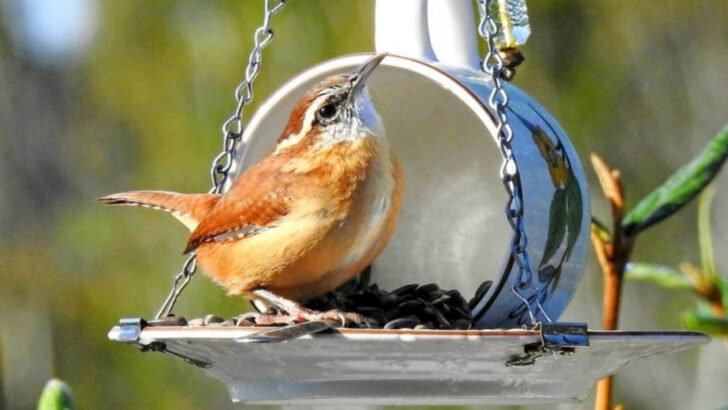Your backyard is wilder than you think.
Right now, just beyond the porch, tiny wings are flapping, colorful feathers are flashing, and sharp little eyes are scanning for snacks. The bird world is buzzing — and your feeder could be the hottest diner in town.
With the right treats, you can turn your yard into a five-star buffet for some of the most charming, cheerful birds in America. We’re talking songbirds, show-offs, and unexpected visitors who will make you do a double take.
No need for binoculars or birding boots. These 16 feathered regulars are more than happy to drop by — if you know what they love.
Northern Cardinal
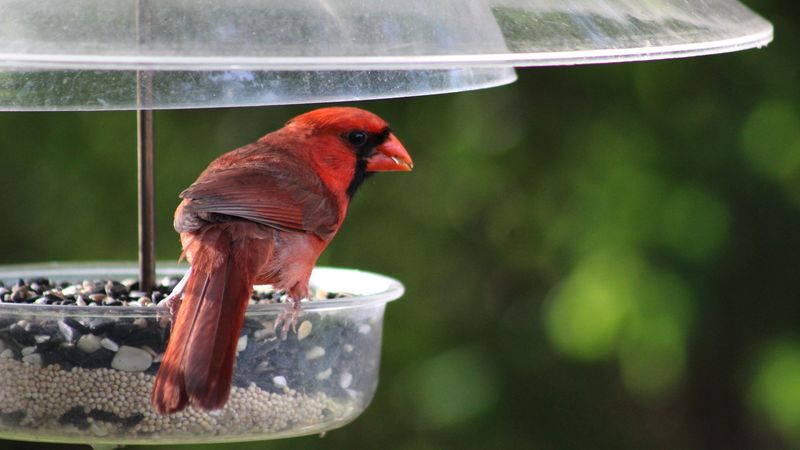
The Northern Cardinal, with its striking red plumage, adds a splash of color to winter landscapes. This bird is not only visually stunning but also boasts a rich, melodious song that can brighten any day. Often seen in pairs, cardinals are known for their strong mate bonds.
Cardinals are ground feeders and prefer sunflower seeds. They are commonly found in woodlands and gardens. With a personality that is both bold and curious, these birds are a favorite among backyard bird enthusiasts. Fun fact: cardinals are known to cover themselves in ants, a behavior called anting.
American Goldfinch
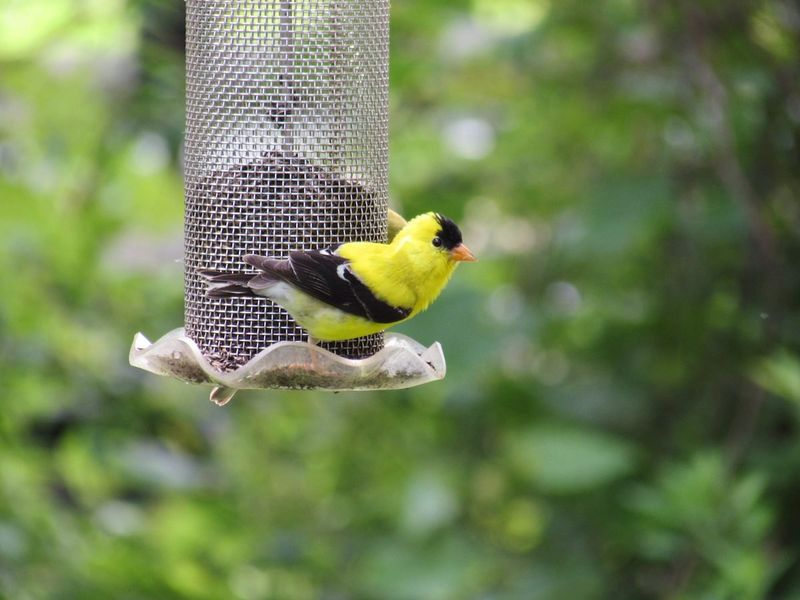
Known for its vibrant yellow plumage, the American Goldfinch is a symbol of joyous summer days. This small finch frequents feeders and loves nyjer and sunflower seeds. Watching them delicately perch and feast is a treat.
Goldfinches are social and often travel in flocks, creating a lively atmosphere. They are late breeders compared to other birds, timing their nesting with the peak of thistle season. Their playful flitting and twittering calls are charming, making them a backyard favorite. Did you know they molt twice a year, changing their plumage with the seasons?
Blue Jay

With its striking blue and white plumage, the Blue Jay is a bold and intelligent visitor. Known for their loud calls and complex social behavior, these birds are fascinating to watch. They are omnivorous and enjoy a variety of foods, including peanuts and corn.
Blue Jays are also known for their ability to mimic the calls of other birds, even hawks. This trick can startle other birds, giving Jays an advantage at feeders. Their curious and assertive nature makes them captivating guests. Fun fact: Blue Jays are known to bury nuts for later consumption, showcasing their intelligence.
House Finch
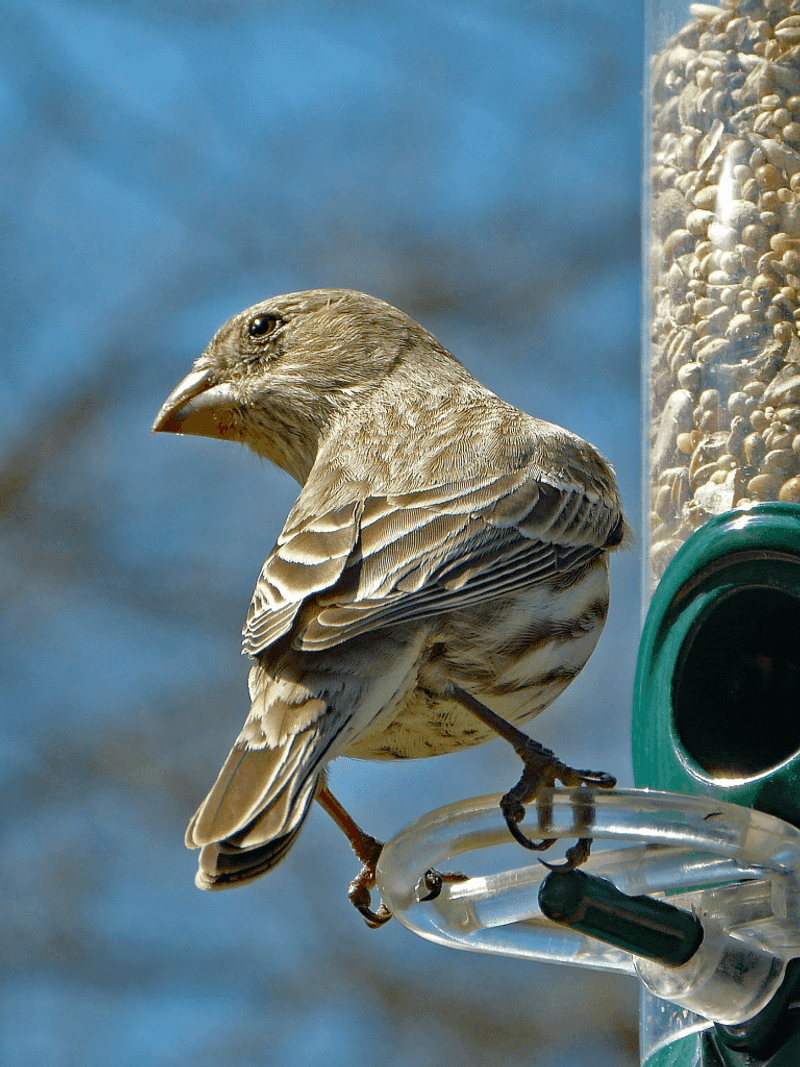
The House Finch, with its pleasant song and cheerful demeanor, is a common sight at feeders. Males are easily recognized by their red-streaked heads and breasts, which vary in intensity.
These sociable birds are often seen in pairs or small flocks. They thrive in urban and suburban areas, making them accessible to many bird enthusiasts. House Finches prefer seeds, especially sunflower, and are known for their adaptability. Did you know that the color intensity in males is influenced by their diet during molting? This makes each one uniquely vibrant.
Mourning Dove
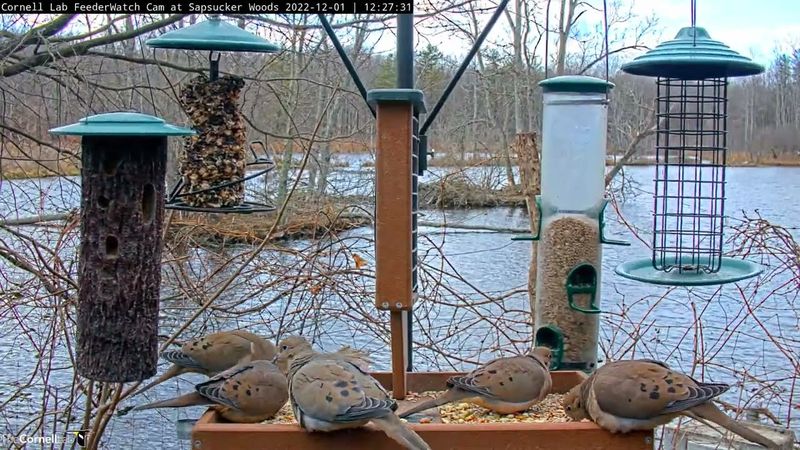
The gentle cooing of the Mourning Dove is a soothing addition to any backyard. These birds are known for their soft grayish-brown plumage and slender tails. They are often seen feeding on the ground, but will readily visit feeders for millet, cracked corn, and sunflower seeds.
Mourning Doves are monogamous and often seen in pairs, adding a sense of tranquility. Their long, pointed wings produce a distinctive whistling sound during flight. Despite their gentle appearance, they are strong fliers, capable of speeds up to 55 miles per hour. Their presence adds grace to any garden setting.
Chickadee
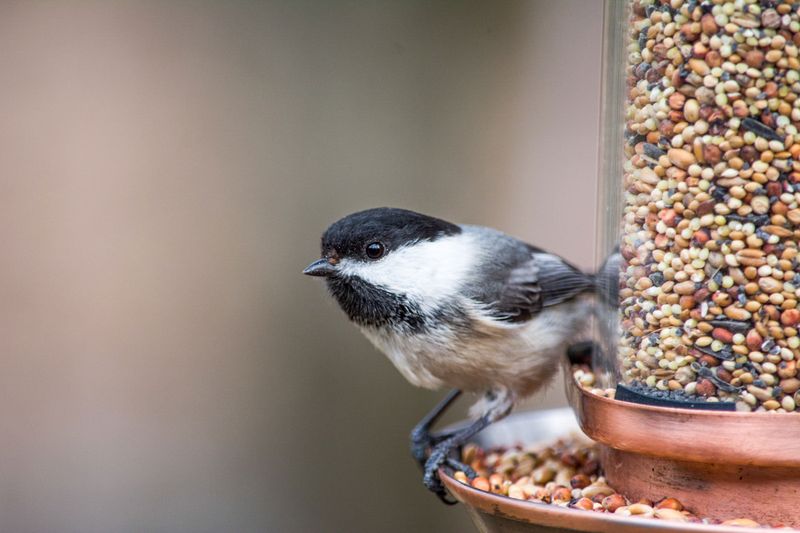
The Chickadee, known for its distinctive black cap and bib, is a small bird with a big personality. Their cheerful “chick-a-dee-dee-dee” call is unmistakable and can brighten any day. These birds are frequent feeder visitors, particularly fond of sunflower seeds.
Chickadees are inquisitive and brave, often allowing close human approach. They are cavity nesters and may use birdhouses, making them a delightful addition to any backyard. Fun fact: Chickadees have excellent spatial memory, enabling them to remember where they’ve stored food. Their energetic antics are sure to entertain.
Tufted Titmouse
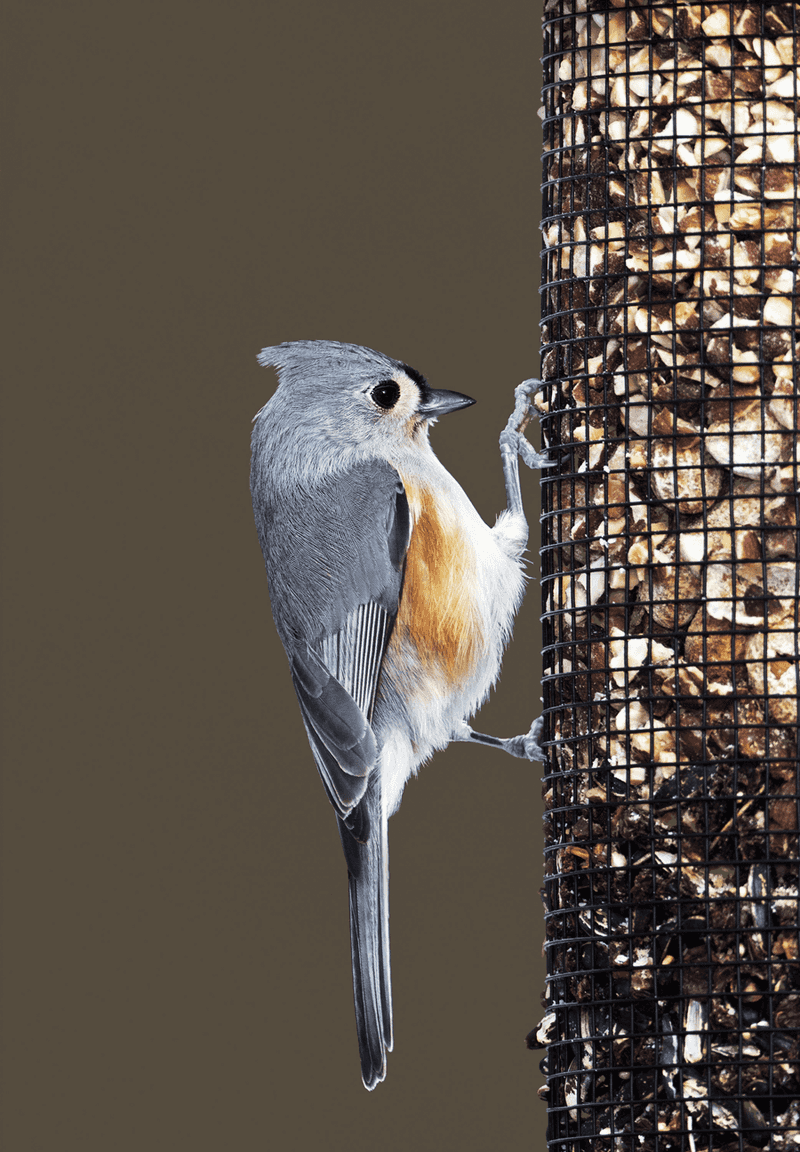
The Tufted Titmouse, with its endearing gray crest and large eyes, is both charming and resourceful. This small bird is a regular at feeders, seeking sunflower seeds, suet, and peanuts. Its soft, whistled “peter-peter-peter” call is a familiar sound in wooded areas.
Titmice are known for their curiosity and will often explore new surroundings. They are social creatures, frequently observed in mixed-species flocks. Their presence signals a lively and active backyard environment. Did you know they sometimes use shed snake skin to line their nests, perhaps to deter predators?
Downy Woodpecker
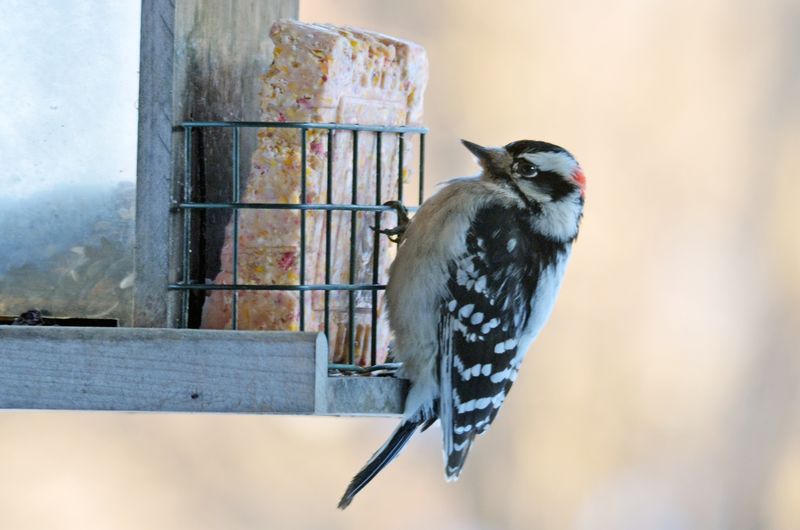
The Downy Woodpecker, the smallest in North America, is a delightful sight with its bold black and white feathers. These woodpeckers are frequent visitors to suet feeders and enjoy peanuts and sunflower seeds too.
Downy Woodpeckers are agile and often observed clinging to tree trunks and branches. They are surprisingly quiet for woodpeckers, but the tapping sound of their beak is a signature presence. Their friendly demeanor makes them a favorite among backyard birders. Fun fact: despite their similar appearance, Downy and Hairy Woodpeckers are distinct species with different habitat preferences.
American Robin
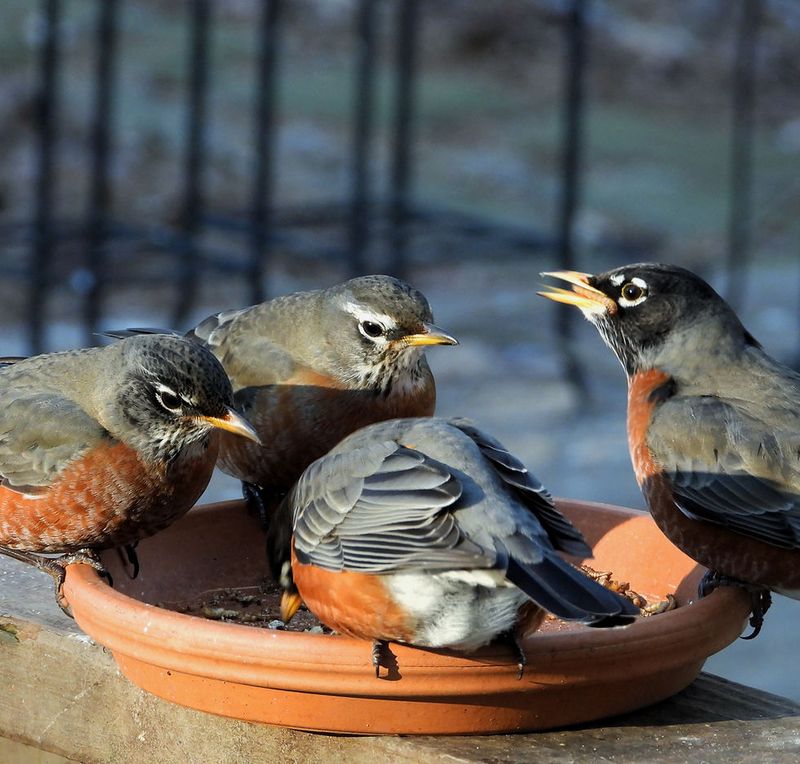
The American Robin, with its rusty orange breast, is a familiar harbinger of spring. Known for their melodious song, robins are often spotted foraging on lawns but will visit feeders for mealworms and fruit.
Robins are versatile and adapt well to urban environments. They are devoted parents, with both males and females taking part in feeding their young. Their presence often signals the changing seasons. Did you know that robins can have up to three broods a year? Their energetic and uplifting nature makes them a garden favorite.
Red-bellied Woodpecker
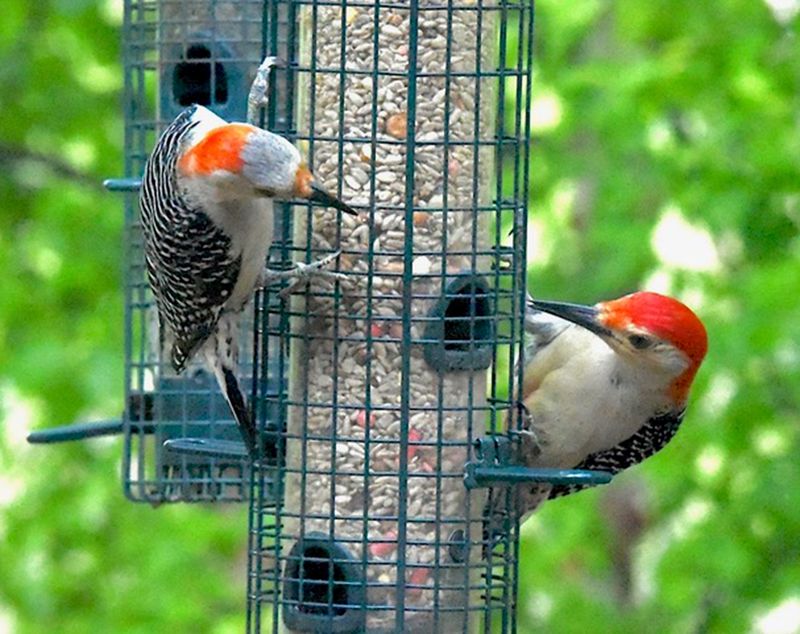
The Red-bellied Woodpecker, despite its name, is more recognizable by the bright red cap and nape. These woodpeckers are frequent visitors to feeders, enjoying suet, peanuts, and berries.
Red-bellied Woodpeckers are known for their loud calls and acrobatic foraging habits. They’re excellent climbers, often seen scaling tree trunks. Their striking appearance and lively nature make them a backyard spectacle. Fun fact: they have a long tongue that can extend two inches past the beak, useful for extracting insects from crevices.
Song Sparrow
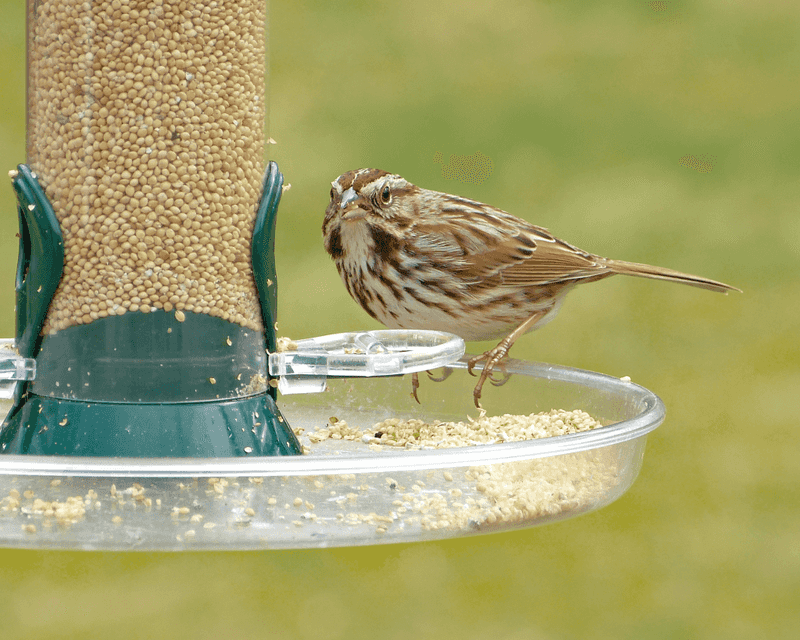
The Song Sparrow, with its streaked brown plumage, is a delightful songster known for its rich and varied melodies. These birds are common visitors to feeders, particularly enjoying seeds and insects.
Song Sparrows are adaptable and can be found in a wide range of habitats, from open fields to suburban gardens. Their persistent singing brightens any morning, and their presence is often a sign of a healthy ecosystem. Did you know that each Song Sparrow has a unique song? This individuality helps them recognize each other.
White-breasted Nuthatch
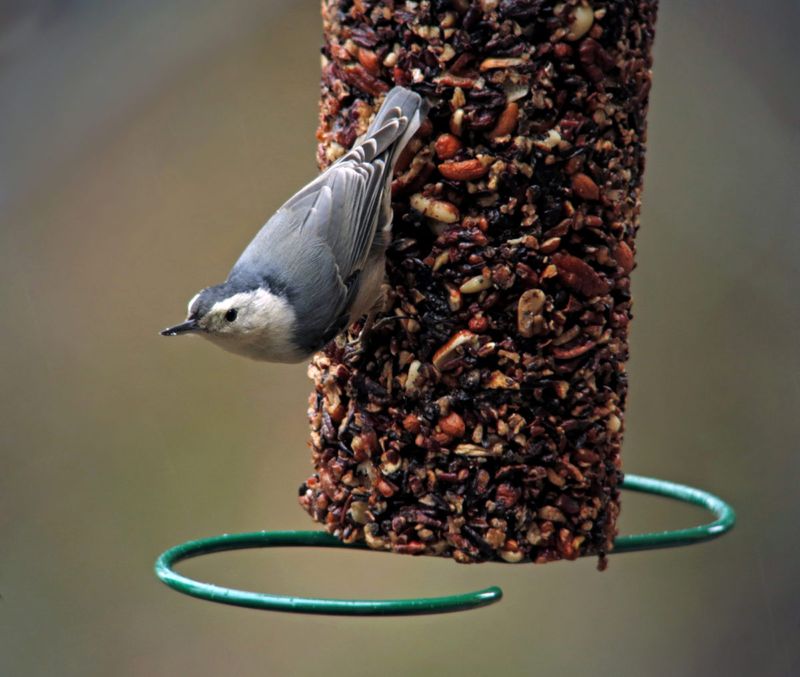
The White-breasted Nuthatch, with its striking white face and breast, is a master acrobat. Known for their ability to move headfirst down trees, these birds are frequent visitors to feeders, enjoying sunflower seeds and suet.
Nuthatches are curious and active, often seen in pairs or small groups. Their nasal “yank-yank” calls are a signature sound in wooded areas. Fun fact: they often hide seeds in bark crevices, storing them for later consumption. Their lively antics and charming presence make them a backyard favorite.
Carolina Wren
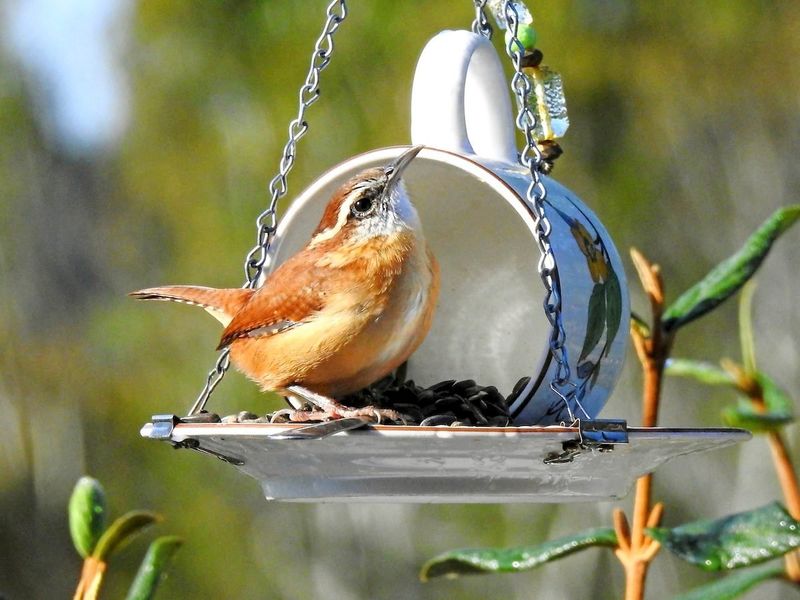
The Carolina Wren, with its rich cinnamon plumage and bold white eyebrow, is a spirited songster known for its loud, teakettle-like calls. These birds are frequent visitors to feeders, enjoying suet, peanuts, and mealworms.
Carolina Wrens are inquisitive and often seen flitting around, exploring every nook and cranny. They build their domed nests in a variety of places, from tree cavities to flower pots. Did you know that they mate for life? Their presence brings energy and vibrancy, making them a cherished addition to any garden.
Purple Finch

The Purple Finch, with its distinctive raspberry-red plumage, is a winter delight at feeders. Known for its sweet, warbling song, this bird brings color to even the dreariest day. They enjoy sunflower seeds and are often seen in small flocks.
Purple Finches have a sturdy build, allowing them to withstand harsh winter conditions. Their presence is often a sign of changing seasons as they migrate. Did you know that they were once described as a “sparrow dipped in raspberry juice”? Their vibrant appearance and harmonious song make them a winter favorite.
Baltimore Oriole
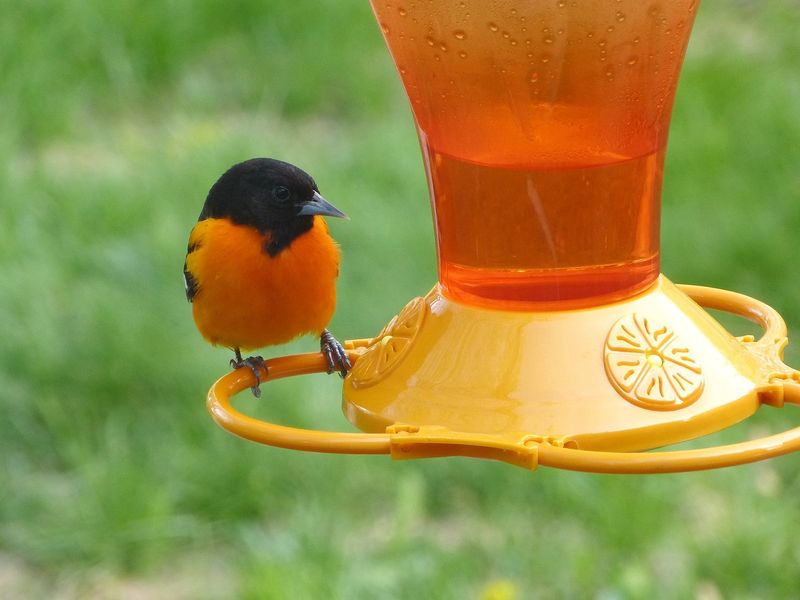
The Baltimore Oriole, with its brilliant orange and black plumage, brings a burst of color to spring gardens. Known for their sweet tooth, these birds are attracted to fruit feeders, particularly enjoying slices of orange and grape jelly.
Orioles are skilled weavers, crafting intricate nests that hang like baskets from branches. They are migratory, returning each spring to delight birdwatchers with their presence. Did you know that their name comes from the resemblance of their colors to Lord Baltimore’s coat of arms? Their vibrant hues and melodious songs make them a garden gem.
Northern Mockingbird
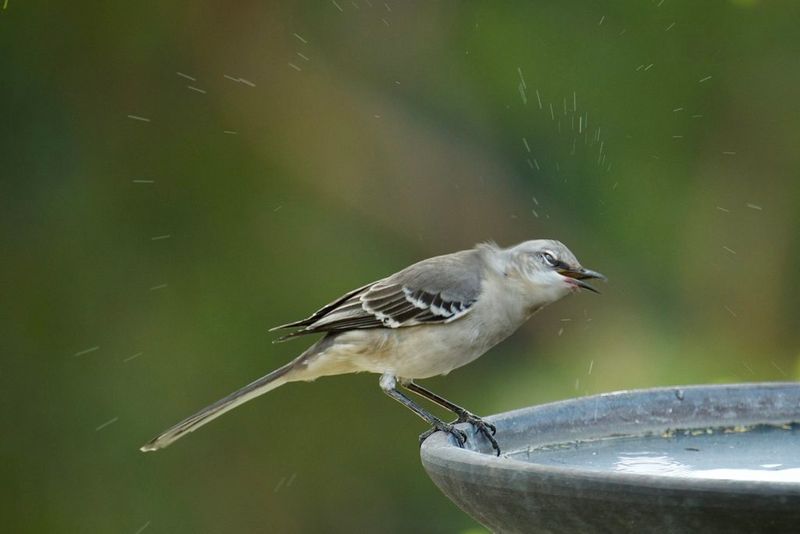
The Northern Mockingbird is renowned for its extraordinary vocal abilities. Known for mimicking the calls of other birds, it turns every backyard into a lively concert. With its sleek grey body and distinctive white wing patches, it adds an elegant touch to any garden.
Curious and bold, this bird often perches conspicuously, delighting observers with its melodic repertoire. Its presence encourages a sense of wonder and appreciation for nature’s diversity.
Setting up a feeder with fruits or mealworms can easily lure these versatile songsters, ensuring they grace your backyard with their lively performances.

